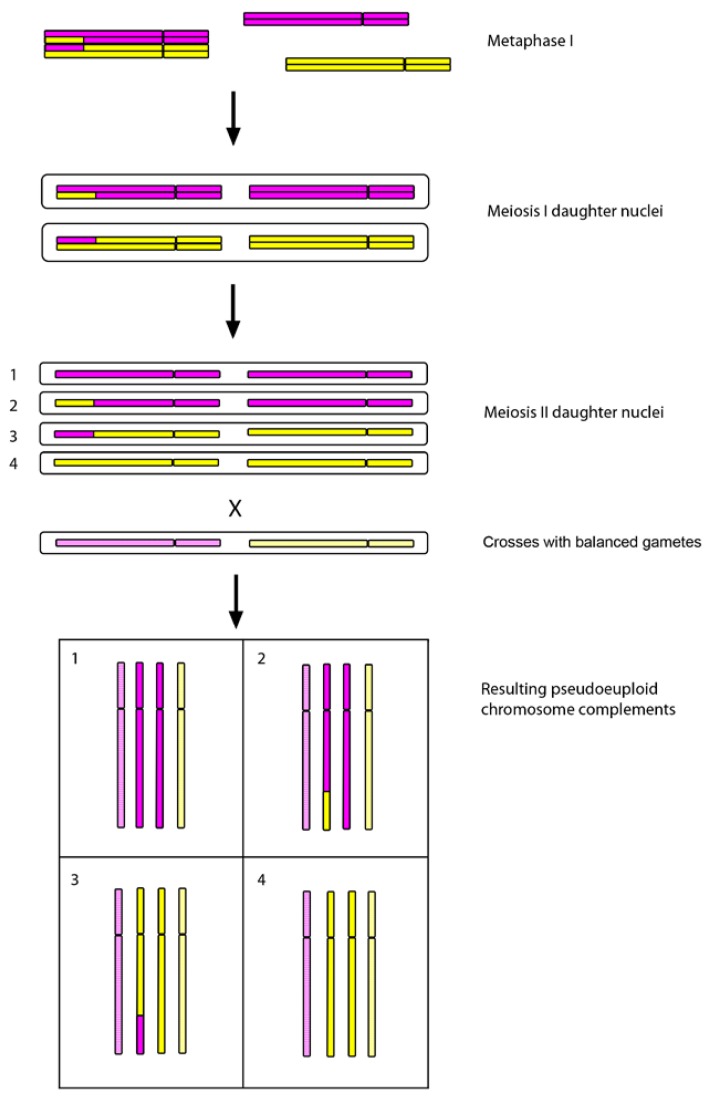Figure 3.
A model for pseudoeuploidy involving homeologous chromosomes. Homeologous chromosomes are labelled yellow or purple. An aberrant bivalent is formed between homeologous chromosomes, and a single crossover results in a homeologous translocation; the two remaining homeologues remain unpaired (univalents). Note that if the translocation had already occurred, this might lead to aberrant pairing. Due to missegregation, daughter cells of the 1st meiotic division receive two homologous chromosomes. The resulting gametes from the 2nd meiotic division have the correct numerical complement but are unbalanced. Plants arising from a cross between gametes 1-4 result in the corresponding complements (chromosomes shown in an unreplicated state). Note that other aberrant pairing configurations such as two homeologous bivalents or a quadrivalent may also result in homeologues segregating to the same daughter nuclei in the 1st meiotic division. Such aberrant meioses were observed in 1st-generation synthetic Brassica napus lines; monosomic/trisomic plants for chromosome 1 were generated at a frequency of ~5% following backcrossing to natural B. napus[41]. Tragopogon allotetraploids in the wild were found to exhibit reciprocal aneuploidy for homologous or homeologous chromosomes [40].

